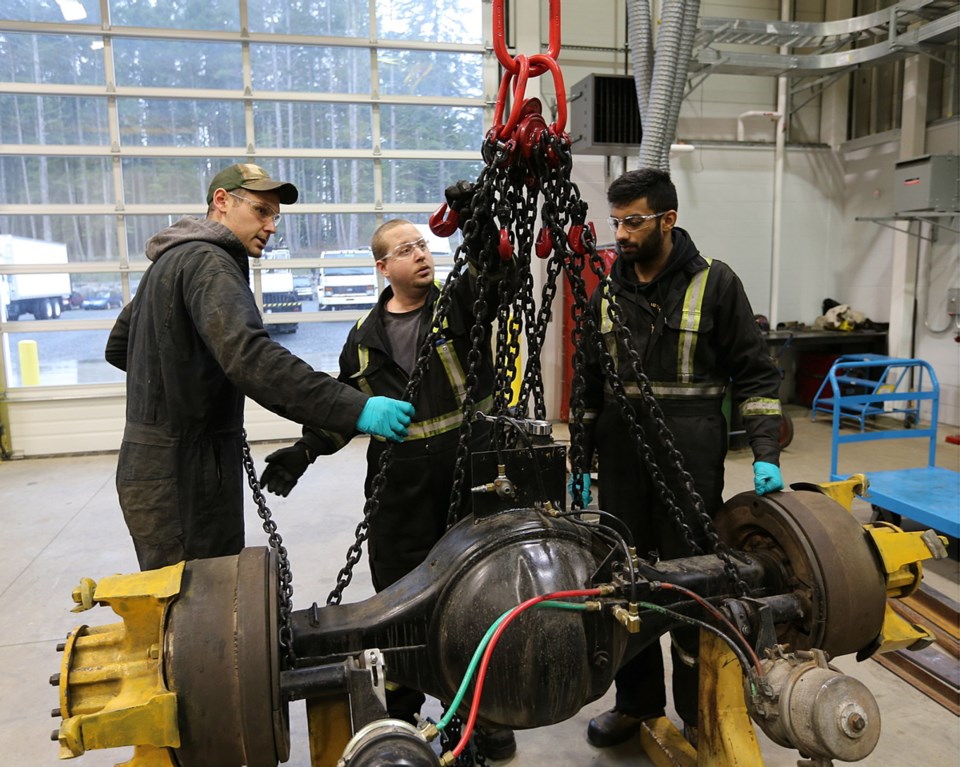On the side of the highway south of Duncan, there is a billboard sponsored by one of B.C.’s largest and most successful construction companies.
The message on the billboard is simple: “We need carpenters.”
Canada, and B.C. in particular, is experiencing a shortage of skilled trades people. With the impending retirement of thousands of baby boomers, this situation, according to those organizing post-secondary trades-training programs, will only become more critical.
Employers in British Columbia need highly skilled workers now and are seeking graduates from apprenticeship programs.
Yet it has always been difficult for high-school counsellors and trades teachers to convince parents and their kids that a career in trades offers a promising future in a secure, well-paid and challenging occupation.
Somehow, even in our sociologically egalitarian 2018 and despite all evidence to the contrary, a career in the trades doesn’t have the same cachet as a career requiring college or university certificates.
Perhaps the unaffordability of post-secondary education should not be a major driver in the decision to follow a career in the trades, but parents and students can’t ignore the various grants and supports available to students pursuing a trade qualification. Apprentices in training might be eligible to claim provincial support for the in-school portion of their apprenticeship program.
The Employment Program of B.C. even provides financial assistance for expenses such as living costs, travel and disability-related costs.
According to the government’s Student Aid B.C. website, eligible in-demand programs include those for plumbers, steamfitters and pipefitters, sprinkler-system installers, welders and related machine operators, carpenters, industrial electricians, heavy-equipment operators, ironworkers, sheet-metal workers, gas fitters, cooks and bakers.
The B.C. Access Grant for Labour Market Priorities program provides grants to eligible students for tools, moving expenses, loan repayment and a category called “unmet needs.”
All of this will come as mind-boggling to university students in law, education or business, many of whom, having paid soaring course fees, will graduate to face an uncertain employment market while carrying a crippling student loan.
In addition to provincial grants, the government of Canada provides up to a maximum lifetime amount of $4,000 per person in federal apprenticeship taxable cash grants to help you progress in or complete your apprenticeship training.
To be eligible, a student must be registered with the appropriate provincial or territorial apprenticeship authority as an apprentice in a designated Red Seal Trade. The student must also provide proof that he or she has successfully completed first- or second-year training.
So if the in-training support for apprenticeship training is in place, what about the future career prospects in the trades?
According to Talent Egg, one of Canada’s more popular online career resources for students and recent graduates, the skilled trades are among the best-paid careers for young Canadians.
According to Statistics Canada, employees in the trades earn an average hourly wage that is six per cent higher than other occupations: $22.36 compared with $21.02.
The highest earners were electricians ($25.26), crane operators ($24.61) and plumbers ($24.10).
Within a few years of becoming a journeyperson, some tradespeople can expect to double their starting wage or salary and, with overtime pay, some even earn six-figure salaries.
In the first 11 months of 2017, Vancouver Island saw $2.1 billion worth of building permits issued, a 21 per cent increase over the previous year. But the increased pace of construction could be threatened by a looming labour shortage, with construction companies pushed to their limits.
In a Times Colonist story last August, Rory Kulmala, chief executive of the Vancouver Island Construction Association, warned: “We are fighting a declining demographic anyway — by 2025, we expect B.C. will be short 15,000 skilled tradespeople.”
Kulmala said not enough young people are going into the trades. Meanwhile, construction crews are working full-out on the Island, and every year they face more people retiring. A significant increase in building permits means there’s plenty of work on the Island.
All of which explains why a major construction company is advertising for skilled tradespeople on a roadside billboard.
It also explains why it may be time for the provincial government to bump up capital-equipment grants for school-district industrial education and pre-apprenticeship programs, and to refocus on those programs as a logical response to industry needs.
Geoff Johnson is a former superintendent of schools.



